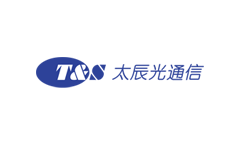The Working Principle and Performance Index of Fiber Optic Attenuator

Fiber attenuators are passive devices used to reduce the power of a signal to a certain level. It is widely used in the detection and debugging of optical fiber communication systems, equipment, and instruments in the process of research, development, and production.
In optical communication, when the power of the optical signal is too high, the optical receiver will be overloaded and the signal will be distorted, so it is necessary to use a fiber attenuator to reduce the power.
Another situation is that in an optical fiber system with multiple wavelength channels, the optical signal power of each channel needs to be approximately the same, so an optical fiber attenuator should be used to equalize the power of each channel.
Ⅰ. The working principle of the optical fiber attenuator
1. Air isolation technology
The transmission of light in the optical fiber abides by the law of total reflection, keeping the intensity relatively stable. Once light absconds from the fiber and transmits through the air, light will then get attenuated.
Flange-type fixed attenuators and adjustable attenuators are made possible based on this principle.
2. Displacement dislocation technology
In this method, the cores of the two optical fibers are slightly shifted and displaced, so as to achieve the effect of power loss.
By using ordinary pigtails, the cores of the two pigtails are spliced with a fusion splicer in the case of misalignment, so that eccentric loss occurs during the transmission process.
3. Attenuating fiber technology
According to the absorption effect of metal ions on light, an attenuating fiber doped with metal ions was developed.
The attenuating fiber is inserted into the ceramic ferrule, and after special processing, it can be made into a fixed attenuator of male and female types.
4. Absorption glass technology
Optically polished neutral absorbing glass sheets can also be used in the fabrication of Fiber Optic Attenuators.
Using the absorption characteristics of substances to light, a sheet or strip of neutral dark glass is made and placed on the light path, the light intensity can be attenuated.
Ⅱ. The performance of fiber optic attenuator
1. Insertion loss (IL)
At the max loss point, the ratio of the optical power (Pi) at the input end to the optical power (Po) at the output end.
2. Attenuation
The reduction value of the optical power of the working wavelength at the specified output port compared to the total input optical power.
3. Return loss (RL)
The ratio of the optical energy incident into the optical fiber attenuator to the optical energy reflected along the incident optical path in the attenuator.
4. PDL polarization-dependent loss
The ratio of the maximum and minimum transmission of a fiber attenuator for all polarization states.
- +1 Like
- Add to Favorites
Recommend
- The Working Principle and Production of Fiber Optic Attenuator
- What Are the Functions of the Fiber Optic Attenuators?
- OpDAT MV Highly Flexible Distributor Housing from METZ CONNECT is Designed for Fiber Optic and Copper Applications
- What Are the Common Fiber Optic Attenuators?
- Types of Fiber Optic Attenuators
- Fiber Optic Connectors Glass vs. Copper
- Knowledge about Fiber Optic Enclosures
- The Ultimate Guide to Fiber Optic Transceiver Modules
This document is provided by Sekorm Platform for VIP exclusive service. The copyright is owned by Sekorm. Without authorization, any medias, websites or individual are not allowed to reprint. When authorizing the reprint, the link of www.sekorm.com must be indicated.





























































































































































































































































































































































































































































































































































































































































































































































































































































































